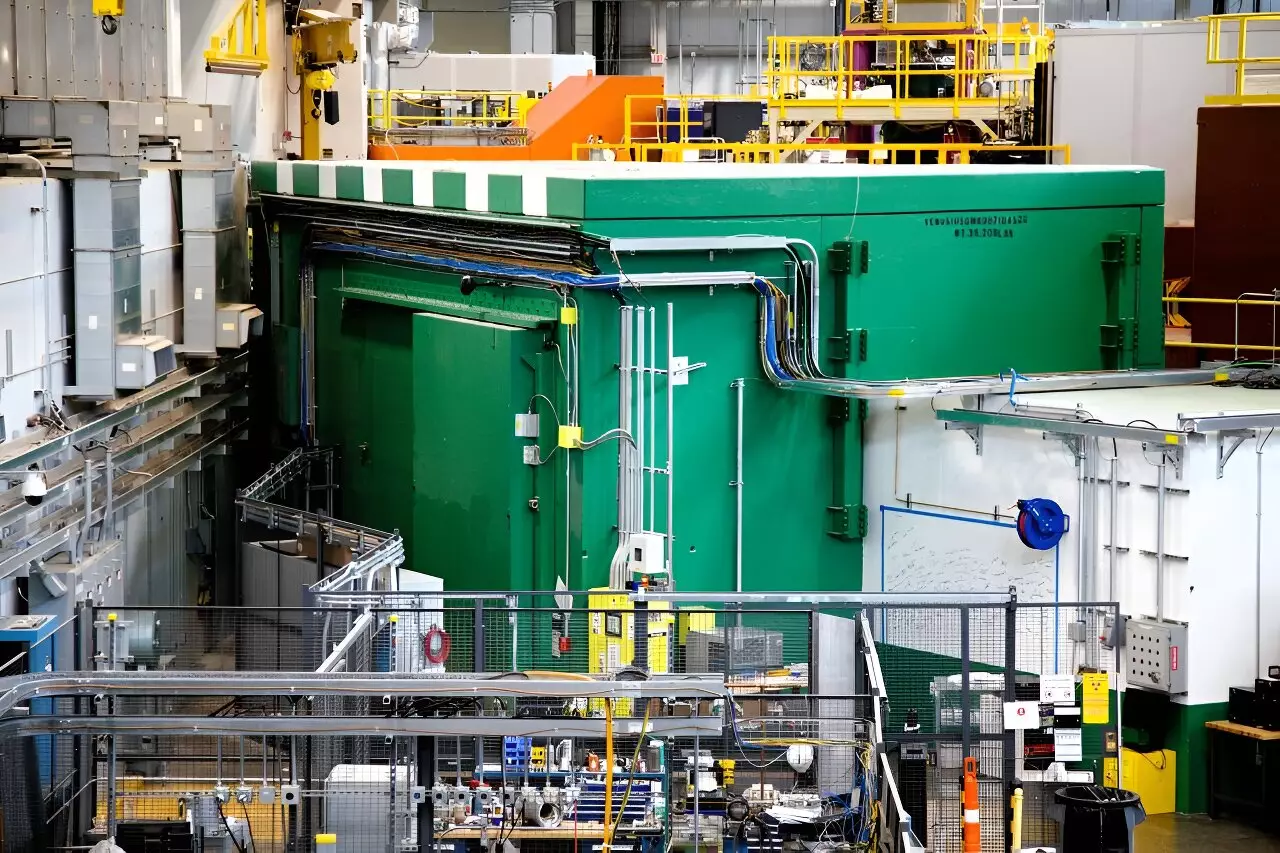The Oak Ridge National Laboratory (ORNL) has recently achieved a significant milestone by introducing an innovative neutron scattering instrument known as the Versatile Neutron Imaging Instrument (VENUS). This state-of-the-art addition to the Spallation Neutron Source marks a groundbreaking step in neutron imaging by integrating artificial intelligence into its operational processes. The Department of Energy’s Office of Science officially sanctioned VENUS’s commissioning in July, heralding a new chapter not only for ORNL but also for various scientific disciplines reliant on advanced imaging techniques.
Neutron scattering, a technique where neutrons are scattered by material to yield information about its atomic and molecular structure, has long played a pivotal role in materials science, biology, and physics. However, the introduction of VENUS signifies an evolution in the way these investigations can be conducted. “It’s a dream come true,” noted Hassina Bilheux, a leading neutron scattering scientist at ORNL. Her sentiment encapsulates the excitement and dedication that has fueled the development of this instrument since its conception.
One of VENUS’s standout features is its ability to produce high-resolution 3D images with exceptional contrast, making it capable of revealing intricate structural details at an atomic level. Unlike traditional imaging methods, which can be destructive or require extensive data collection time, VENUS will utilize cutting-edge computational methods and artificial intelligence to expedite these processes. Time-of-flight raw data can be transformed into detailed 3D models in a fraction of the time – a monumental leap for researchers who typically wait days or weeks for similar outcomes.
The integration of AI allows researchers to maximize their experimental time, yielding immediate results that can inform the direction of ongoing investigations. “VENUS offers broad capabilities for access to unique contrasts from many fields in science,” Bilheux emphasized, highlighting its interdisciplinary potential. With this operational paradigm, the hopes for VENUS extend beyond mere data generation; it aims to enhance scientific collaboration and innovation across various sectors.
The implications of VENUS extend across numerous domains, from energy storage advancements to studies in plant physiology. For instance, in materials science, researchers can utilize its capabilities to develop more efficient building materials, contributing to sustainable construction practices and energy conservation efforts. In another area, VENUS promises to illuminate the intricacies of plant biology, helping to cultivate drought-resistant crops essential for food security in a rapidly changing climate.
Moreover, the technology holds particular promise for space research. In collaboration with NASA, ORNL has utilized neutron scattering to analyze delicate lunar rocks and glean insights into the mineral compositions that may suggest the presence of water or conditions favorable for planetary formation. This unique non-destructive capability sets neutron imaging apart from other techniques, allowing for the creation of highly detailed three-dimensional representations of fragile samples without compromising their integrity.
The development of VENUS has not unfolded in isolation; it represents collaborative efforts involving the ORNL team and external partners, including researchers from Brookhaven National Laboratory and Purdue University. This joint endeavor resulted in sophisticated algorithms central to VENUS’s AI functionalities, ensuring that users will benefit from streamlined data acquisition techniques and optimized experimental procedures.
With physical construction of VENUS initiated in 2019, the project has demonstrated remarkable resilience amid the challenges posed by the pandemic, moving toward completion with beamtime planned for users by late 2025. The establishment of a dedicated VENUS Advisory Committee further underscores the commitment to ensuring that this instrument achieves its potential as a critical resource for scientific inquiry.
As Science continues to grapple with complex global challenges, VENUS emerges as a beacon of hope. By facilitating cutting-edge research and encouraging interdisciplinary collaboration, it positions itself as not just an instrument, but as a vital tool for understanding the very fabric of materials and biological processes. The vision articulated by Jens Dilling, associate laboratory director for ORNL’s Neutron Sciences Directorate, signifies a growing recognition of the transformative power of science. “Considering some of the challenges we face as a nation and around the world, science and the talented people who make it happen… might be our greatest hope.”
The arrival of VENUS at Oak Ridge National Laboratory signals an exciting new frontier in neutron imaging, characterized by high-resolution capabilities and the integration of artificial intelligence. Its multifaceted applications across various fields promise not only to advance scientific understanding but also inspire future innovations in technology and research methodologies. Such advancements pave the way for a deeper exploration of the material world and the pursuit of sustainable solutions for contemporary challenges.


Leave a Reply